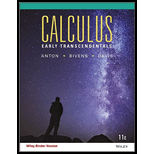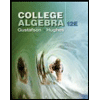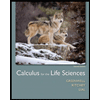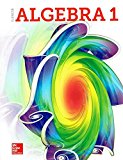1 Limits And Continuity 2 The Derivative 3 Topics In Differentiation 4 The Derivative In Graphing And Applications 5 Integration 6 Applications Of The Definite Integral In Geometry, Science, And Engineering 7 Principles Of Integral Evaluation 8 Mathematical Modeling With Differential Equations 9 Infinite Series 10 Parametric And Polar Curves; Conic Sections 11 Three-dimensional Space; Vectors 12 Vector-valued Functions 13 Partial Derivatives 14 Multiple Integrals 15 Topics In Vector Calculus expand_more
4.1 Analysis Of Functions I: Increase, Decrease, And Concavity 4.2 Analysis Of Functions Ii: Relative Extrema; Graphing Polynomials 4.3 Analysis Of Functions Iii: Rational Functions, Cusps, And Vertical Tangents 4.4 Absolute Maxima And Minima 4.5 Applied Maximum And Minimum Problems 4.6 Rectilinear Motion 4.7 Newton’s Method 4.8 Rolle’s Theorem; Mean-value Theorem Chapter Questions expand_more
Problem 1QCE: Let fx=3x+1x3x+2x4 . Given that fx=30x1x+22x42,fx=90x22x+4x+23x43 determine the following properties... Problem 2QCE: Let fx=x24x8/3 . Given that fx=2x2163x11/3,fx=25x21769x14/3 determine the following properties of... Problem 3QCE: Let fx=x22ex/2 . Given that fx=12x24ex/2,fx=14x2+4x4ex/2 determine the following properties of the... Problem 1ES: Give a graph of the rational function and label the coordinates of the stationary points and... Problem 2ES: Give a graph of the rational function and label the coordinates of the stationary points and... Problem 3ES: Give a graph of the rational function and label the coordinates of the stationary points and... Problem 4ES: Give a graph of the rational function and label the coordinates of the stationary points and... Problem 5ES: Give a graph of the rational function and label the coordinates of the stationary points and... Problem 6ES: Give a graph of the rational function and label the coordinates of the stationary points and... Problem 7ES: Give a graph of the rational function and label the coordinates of the stationary points and... Problem 8ES: Give a graph of the rational function and label the coordinates of the stationary points and... Problem 9ES: Give a graph of the rational function and label the coordinates of the stationary points and... Problem 10ES: Give a graph of the rational function and label the coordinates of the stationary points and... Problem 11ES: Give a graph of the rational function and label the coordinates of the stationary points and... Problem 12ES: Give a graph of the rational function and label the coordinates of the stationary points and... Problem 13ES: Give a graph of the rational function and label the coordinates of the stationary points and... Problem 14ES: Give a graph of the rational function and label the coordinates of the stationary points and... Problem 15ES: In each part, make a rough sketch of the graph using asymptotes and appropriate limits but no... Problem 16ES: In each part, make a rough sketch of the graph using asymptotes and appropriate limits but no... Problem 17ES: Show that y=x+3 is an oblique asymptote of the graph of fx=x2/x3 . Sketch the graph of y=fx showing... Problem 18ES: Show that y=3x2 is a curvilinear asymptote of the graph of fx=2+3xx3/x . Sketch the graph of y=fx... Problem 19ES: Sketch a graph of the rational function and label the coordinates of the stationary points and... Problem 20ES: Sketch a graph of the rational function and label the coordinates of the stationary points and... Problem 21ES: Sketch a graph of the rational function and label the coordinates of the stationary points and... Problem 22ES: Sketch a graph of the rational function and label the coordinates of the stationary points and... Problem 23ES: Sketch a graph of the rational function and label the coordinates of the stationary points and... Problem 24ES: Sketch a graph of the rational function and label the coordinates of the stationary points and... Problem 25ES: In each part, match the function with graphs I-VI. (a) x1/3 (b) x1/4 (c) x1/5 (d) x2/5 (e) x4/3 (f)... Problem 26ES: Sketch the general shape of the graph of y=x1/n, and then explain in words what happens to the shape... Problem 27ES: Determine whether the statement is true or false. Explain your answer. Suppose that fx=Px/Qx, where... Problem 28ES: Determine whether the statement is true or false. Explain your answer.
If the graph of has a... Problem 29ES: Determine whether the statement is true or false. Explain your answer.
If the graph of has a... Problem 30ES: Determine whether the statement is true or false. Explain your answer.
If the graph of has a cusp... Problem 31ES: Give a graph of the function and identify the locations of all critical points and inflection... Problem 32ES: Give a graph of the function and identify the locations of all critical points and inflection... Problem 33ES: Give a graph of the function and identify the locations of all critical points and inflection... Problem 34ES: Give a graph of the function and identify the locations of all critical points and inflection... Problem 35ES: Give a graph of the function and identify the locations of all critical points and inflection... Problem 36ES: Give a graph of the function and identify the locations of all critical points and inflection... Problem 37ES: Give a graph of the function and identify the locations of all critical points and inflection... Problem 38ES: Give a graph of the function and identify the locations of all critical points and inflection... Problem 39ES: Give a graph of the function and identify the locations of all relative extrema and inflection... Problem 40ES: Give a graph of the function and identify the locations of all relative extrema and inflection... Problem 41ES: Give a graph of the function and identify the locations of all relative extrema and inflection... Problem 42ES: Give a graph of the function and identify the locations of all relative extrema and inflection... Problem 43ES: Give a graph of the function and identify the locations of all relative extrema and inflection... Problem 44ES: Give a graph of the function and identify the locations of all relative extrema and inflection... Problem 45ES: Using L'Ho pital's rule (Section 3.6) one can verify that limx+exx=+,limx+xex=0,limxxex=0 In these... Problem 46ES: Using L'Ho pital's rule (Section 3.6) one can verify that limx+exx=+,limx+xex=0,limxxex=0 In these... Problem 47ES: Using L'Ho pital's rule (Section 3.6) one can verify that limx+exx=+,limx+xex=0,limxxex=0 In these... Problem 48ES: Using L'Ho pital's rule (Section 3.6) one can verify that limx+exx=+,limx+xex=0,limxxex=0 In these... Problem 49ES: Using L'Ho pital's rule (Section 3.6) one can verify that limx+exx=+,limx+xex=0,limxxex=0 In these... Problem 50ES: Using L'Ho pital's rule (Section 3.6) one can verify that limx+exx=+,limx+xex=0,limxxex=0 In these... Problem 51ES: Using L'Ho pital's rule (Section 3.6) one can verify that limx+exx=+,limx+xex=0,limxxex=0 In these... Problem 52ES: Using L'Ho pital's rule (Section 3.6) one can verify that limx+exx=+,limx+xex=0,limxxex=0 In these... Problem 53ES: Using L'Ho pital's rule (Section 3.6) one can verify that limx+exx=+,limx+xex=0,limxxex=0 In these... Problem 54ES: Using L'Ho pital's rule (Section 3.6) one can verify that limx+exx=+,limx+xex=0,limxxex=0 In these... Problem 55ES: Using L'Ho pital's rule (Section 3.6) one can verify that limx+lnxxr=0,limx+xrlnx=+,limx0+xrlnx=0... Problem 56ES: Using L'Ho pital's rule (Section 3.6) one can verify that limx+lnxxr=0,limx+xrlnx=+,limx0+xrlnx=0... Problem 57ES: Using L'Ho pital's rule (Section 3.6) one can verify that limx+lnxxr=0,limx+xrlnx=+,limx0+xrlnx=0... Problem 58ES: Using L'Ho pital's rule (Section 3.6) one can verify that limx+lnxxr=0,limx+xrlnx=+,limx0+xrlnx=0... Problem 59ES: Using L'Ho pital's rule (Section 3.6) one can verify that limx+lnxxr=0,limx+xrlnx=+,limx0+xrlnx=0... Problem 60ES: Using L'Ho pital's rule (Section 3.6) one can verify that limx+lnxxr=0,limx+xrlnx=+,limx0+xrlnx=0... Problem 61ES: Consider the family of curves y=xebxb0 . (a) Use a graphing utility to generate some members of this... Problem 62ES: Consider the family of curves y=ebx2b0 . (a) Use a graphing utility to generate some members of this... Problem 63ES: (a) Determine whether the following limits exist, and if so, find them: limx+excosx,limxexcosx (b)... Problem 64ES: Consider the family of curves y=xnex2/n, where n is a positive integer. (a) Use a graphing utility... Problem 65ES: The accompanying figure shows the graph of the derivative of a function h that is defined and... Problem 66ES: Let fx=12xhx, where hx is as given in Exercise 65. Suppose that x=5 is a critical point for fx . (a)... Problem 67ES: A rectangular plot of land is to be fenced off so that the area enclosed will be 400ft2 . Let L be... Problem 68ES: A box with a square base and open top is to be made from sheet metal so that its volume is 500in3 .... format_list_bulleted


 College Algebra (MindTap Course List)AlgebraISBN:9781305652231Author:R. David Gustafson, Jeff HughesPublisher:Cengage Learning
College Algebra (MindTap Course List)AlgebraISBN:9781305652231Author:R. David Gustafson, Jeff HughesPublisher:Cengage Learning Calculus For The Life SciencesCalculusISBN:9780321964038Author:GREENWELL, Raymond N., RITCHEY, Nathan P., Lial, Margaret L.Publisher:Pearson Addison Wesley,
Calculus For The Life SciencesCalculusISBN:9780321964038Author:GREENWELL, Raymond N., RITCHEY, Nathan P., Lial, Margaret L.Publisher:Pearson Addison Wesley,
 Glencoe Algebra 1, Student Edition, 9780079039897...AlgebraISBN:9780079039897Author:CarterPublisher:McGraw Hill
Glencoe Algebra 1, Student Edition, 9780079039897...AlgebraISBN:9780079039897Author:CarterPublisher:McGraw Hill


